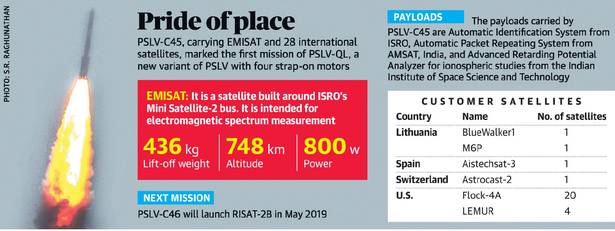7667766266
enquiry@shankarias.in
Why in news?
The Indian Space Research Organisation (ISRO) recently launched the PSLV-C45 rocket carrying one Indian (EMISAT) and 28 international satellites.
What is the mission for?

What are the unique features of PSLV-C45?
What was the earlier procedure?
How is PSLV C-45 different from this?
What is the significance?
What purpose will the fourth stage serve?
Source: The Hindu, Indian Express